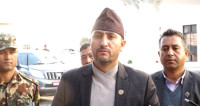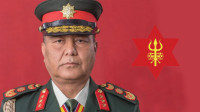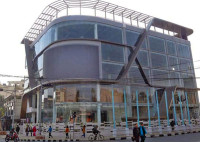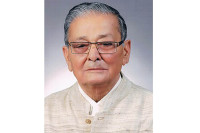National
Hearing on House dissolution case concludes with amici curiae divided
Two members present their briefs against May 21 decisions and the other two in support.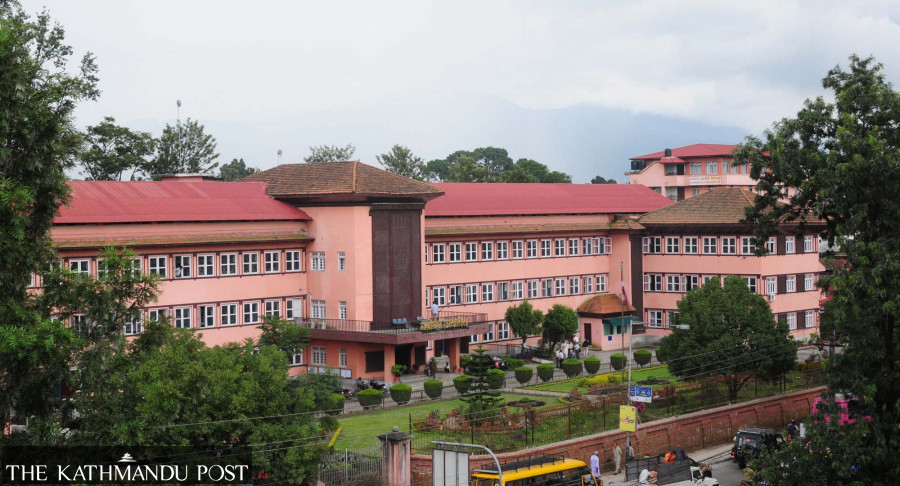
Tika R Pradhan
As the hearing on the House dissolution wound up, the four amici curiae invited by the Constitutional Bench were equally divided while presenting their briefs on Monday, with two supporting Prime Minister KP Sharma Oli’s May 21 move and as many calling it wrong.
As sought by the bench, led by Chief Justice Cholendra Shumsher Rana, Nepal Bar Association sent senior advocates Raghab Lal Vaidya and Usha Malla Pathak and Supreme Court Bar Association had sent Senior advocates Komal Prakash Ghimire and Prakash Bahadur KC.
Senior advocate Vaidya said that Oli’s appointment as prime minister under Article 76 (3) itself was unconstitutional.
“Based on which law and provisions of the constitution a prime minister who lost the vote of confidence was appointed again under Article 76 (3)?” Vaidya asked.
He was referring to Oli’s appointment on May 13 as prime minister, three days after he lost the vote of confidence when he could secure just 93 votes in the 275-member House of Representatives.
Oli became prime minister after the 2017 elections in February 2018 with the backing of the Communist Party of Nepal (Maoist Centre) under Article 76 (2). But he automatically became a prime minister under Article 76 (1) after his CPN-UML and the Maoist merged to form the Nepal Communist Party (NCP) on May 18, 2018, as together the two parties commanded close to a two-thirds majority in the House.
But after the March 7 Supreme Court decision to revive the UML and the Maoist Centre, he was reduced to the status of prime minister appointed under Article 76 (2), and he had gone for a floor test on May 10, which he failed.
But since no one laid claim to the post of prime minister under Article 76 (3), as called by President Bidya Devi Bhandari, Oli was appointed prime minister again on May 13.
“The court should ask on what basis Oli was appointed prime minister on May 13,” said Vaidya.
One of the key issues around which the entire hearing, which began on June 23, has revolved around is Article 76 (5).
Even after being appointed prime minister under Article 76 (3), Oli decided to skip the mandatory provision, required by Article 76 (4), of securing a vote of confidence within 30 days from the appointment. He instead encouraged President Bidya Devi Bhandari to invoke Article 76 (5), saying that there was no political situation for him to win the confidence of the lower house.
When Bhandari called on lawmakers to lay claim to the post of prime minister, Nepali Congress President Sher Bahadur Deuba laid claim to the post with the signatures of 149 lawmakers– about a dozen more than required to prove a majority. But Oli, who himself had declared there was no way he could prove a majority, too applied before the President for the post of prime minister.
After the President rejected both claims saying they were “insufficient”, Oli dissolved the House.
Deuba, with the backing of 145 lawmakers of the dissolved House including 23 from Oli’s UML, filed a petition at the Supreme Court on May 24 against Oli and President’s moves.
Ghimire, another amicus curiae, also argued that the same prime minister cannot be a candidate for the post of prime minister after asking the President to invoke Article 76 (5) to find his alternative.
“It’s like saying ‘I myself am my alternative,” said Ghimire. “I cannot be the alternative to myself; somebody else will have to be.”
But senior advocate Malla Pathak, the amicus curiae sent by the Nepal Bar Association, said that the election is the only way out for the country, hence the petitions against the House dissolution should be annulled.
She argued that there were no provisions in Article 76 (5) regarding the basis for the prime minister to get a vote of confidence so it was the sole discretion of the President to decide whether to appoint someone prime minister or not.
She also tried to make it clear to the bench that a candidate under Article 76 (5) must have party’s support.
“Article 76 (5) means a candidate for the post of prime minister need not be from a party but it does not mean that the party should not support him/her,” said Pathak. “When KP Oli was contesting for the post of prime minister from the UML, his party’s lawmakers could not support another party’s leader.”
She was referring to lawmakers from the Madhav Nepal faction who had extended their support to Deuba.
Prakash Bahadur KC, who represented the Supreme Court Bar Association, also supported Oli’s decisions.
“Article 76(5) says if a member of the House of Representatives presents a basis to garner a confidence vote, shouldn’t the basis be credible?” KC asked.
Unlike during the hearing of the past House dissolution of December 20 when also the Supreme Court had sought five advocates as amici curiae, this time there is a sharp division. On top of that, advocates sent by the Nepal Bar Association and the Supreme Court Bar Association too are divided.
During the past hearing also, five amici curiae were sent by both bar associations. Of them, one from Nepal Bar Association had opposed the House dissolution, while four others had presented their briefs against it.
Before the amici curiae concluded their briefs, advocates pleading on behalf of the plaintiffs were given time for counter arguments.
Senior advocate Harihar Dahal said there was no way the House could be dissolved when there still was a possibility of forming another government.
“There is not just the Nepali Congress. There are the Maoist Centre, Rastriya Janamorcha and some UML members who are trying to form an alternative government,” said Dahal. “They have to come to the court to make it a point that Parliament cannot be dissolved until there is a chance of forming an alternative government.”
After the hearing concluded, the Constitutional Bench scheduled its next sitting for July 12. The bench had given 15 hours each to lawyers arguing on behalf of petitioners and defendants and two hours to the amicus curiae.
As many as 36 advocates from the petitioners’ side presented their arguments, while 31 advocates represented the defendants.




 11.12°C Kathmandu
11.12°C Kathmandu
